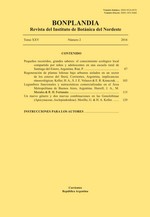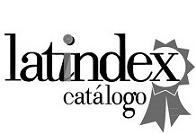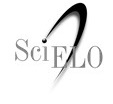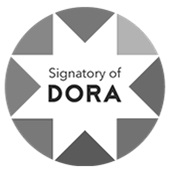Legumbres funcionales y nutracéuticas comercializadas en el Área Metropolitana de Buenos Aires, Argentina.
DOI:
https://doi.org/10.30972/bon.2521261Palabras clave:
Alimentos funcionales y nutracéuticos, Etnobotánica urbana, LeguminosaeResumen
En este trabajo se analizan datos de relevamientos etnobotánicos de especies de legumbres (Leguminosae) funcionales y nutracéuticas comercializadas en el área Metropolitana de Buenos Aires, Argentina. El estudio fue realizado en comercios del circuito general y de los circuitos restringidos de inmigrantes bolivianos y chinos. Se registraron las especies, productos, usos terapéuticos locales y datos disponibles sobre actividad biológica y efectos estudiados. Se registraron 19 especies de legumbres: Arachis hypogaea var. hypogaea, Cicer arietinum, Glycine max, Lablab purpureus, Lens culinaris, Lupinus albus, L. mutabilis, Medicago sativa, Phaseolus lunatus, P. vulgaris, Pisum sativum, Prosopis alba, Tamarindus indica, Trifolium repens, Trigonella foenum-graecum, Vicia faba, Vigna angularis, V. radiata y V. uniguiculata var. unguiculata. La mayoría de las especies (15) se hallaron en el circuito comercial general y unas pocas (4) en los circuitos restringidos de los inmigrantes, entre estas L. mutabilis, que merece mayor difusión. En la mayoría de los casos, los usos locales asignados a las especies relevadas tienen correlato con los datos disponibles en la literatura sobre su actividad biológica y efectos evaluados. La información brindada en esta contribución aporta tanto a los estudios etnobotánicos como a la difusión de la relevancia terapéutica de las legumbres en el área de estudio.Descargas
Los datos de descargas todavía no están disponibles.
Descargas
Publicado
2016-07-01
Cómo citar
Hurrell, J. A., Morales, M., & Fortunato, R. H. (2016). Legumbres funcionales y nutracéuticas comercializadas en el Área Metropolitana de Buenos Aires, Argentina. Bonplandia, 25(2), 115–128. https://doi.org/10.30972/bon.2521261
Número
Sección
Artículos originales
Licencia
Declaration of Adhesion to Open Access
- All contents of Bonplandia journal are available online, open to all and for free, before they are printed.
Copyright Notice
- Bonplandia magazine allows authors to retain their copyright without restrictions.
- The journal is under a Creative Commons Attribution 4.0 International license.















.jpg)


